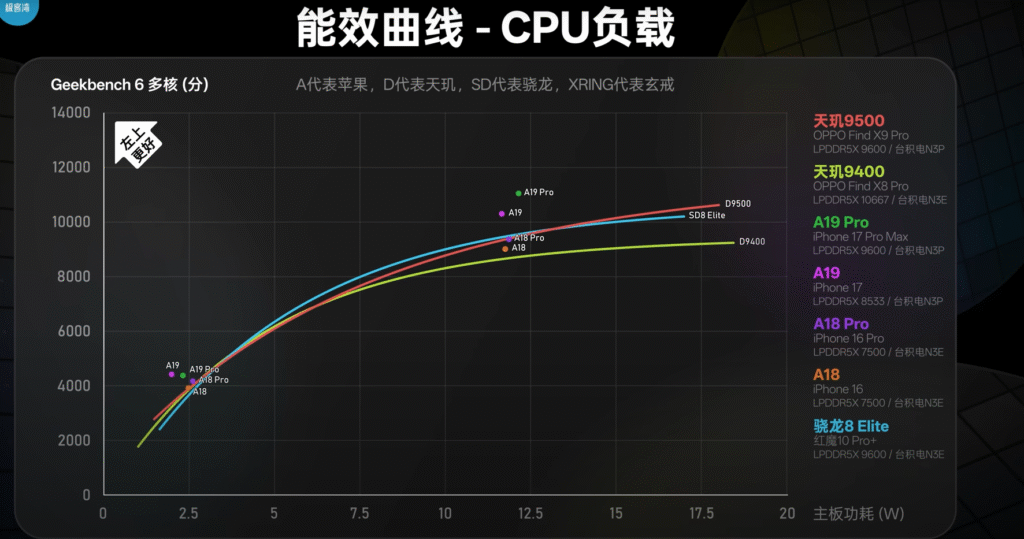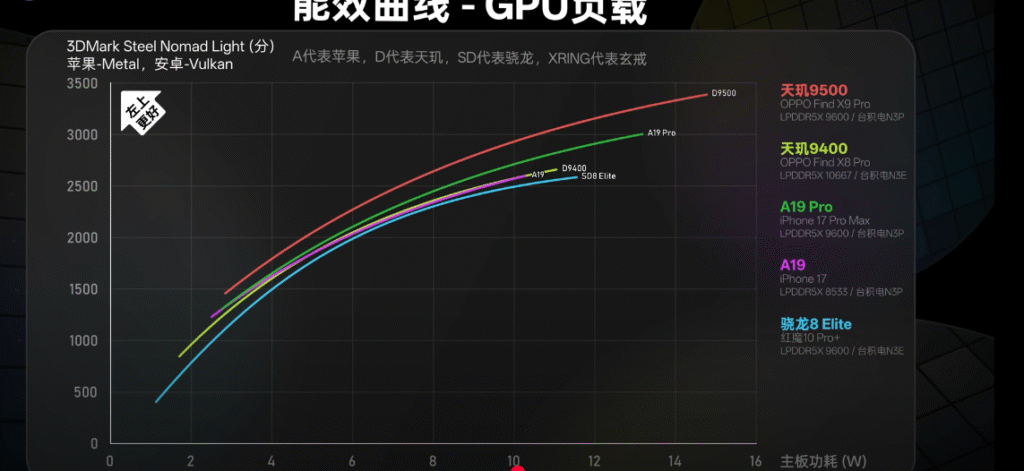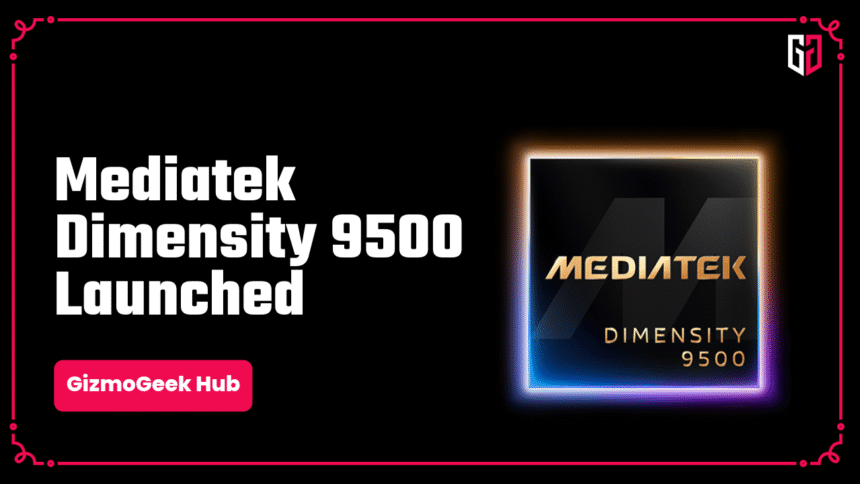MediaTek has launched the Dimensity 9500, marking a significant upgrade from the Dimensity 9400, introduced in October 2024. The new CPU offers numerous new features and significant performance improvements for the CPU, GPU, and NPU.
CPU
The Mediatek Dimensity 9500 features a completely new core design that utilizes an all-big architecture. Once again, the core design includes 1x Arm C1 Ultra, which is clocked at 4.21 GHz, and 3x C1 Premium. Lastly, 4x C1 Pro with a total of 16 MB L3 cache and 10 MB SLC cache, and we are getting a great increase in the L3 caches since the previous generation had 12 MB of L3 cache.


Now we have around 16 MB of L3 cache, and we get a 32% increase in single-core and 17% higher multi-core performance, and 55% less power on the C1 Ultra cores, but according to the leaked benchmarks and power consumption, these seem off. The Dimensity 9500 uses a bit less power than the 9400 at the peak, but it’s not much faster than its competition, either, which is disappointing since the 8 Elite Gen 5 is right around the corner with more performance. Source: Geekerwan.
GPU
The Mediatek Dimensity 9500 is equipped with the ARM Mali-G1 Ultra MC12 GPU, which Mediatek claims offers 35% faster peak performance and 42% improved power efficiency.


Yes, the GPU is the fastest of the lot, but the power consumption is at around 15.5W or 15W, which is much too high for a mobile chip, though we can’t compare since the 8 elite gen 5 data isn’t out yet. Source: Geekerwan
The GPU introduces significant enhancements to ray tracing in games, with MediaTek claiming a 120% improvement over the Dimensity 9400, which kind of seems true since the device has demonstrated over 200% in ray-traced performance according to 3DMark. Furthermore, support for MRFC 3.0 technology enables FPS in games to be boosted from 60 fps to 120 fps, which is impressive. On compatible titles, the GPU can run games with ray tracing at 120 fps.
NPU
The Mediatek Dimensity 9500 features a Mediatek NPU 990 with a generative AI engine 2.0, which doubles the compute power, and it introduces Bitnet 1.58, reducing the power consumption up to 33%, and it comes with up to 56% lower peak power usage and over 2x faster token generation speed, and the industry’s first 4k text-to-image generation. Lastly, the Dimensity 9500 is the first to support an integrated compute-in-memory architecture for its newly added super-efficient NPU, significantly reducing power consumption and enabling it to run AI models continuously, and users can benefit from 100% faster 3 billion parameter LLM output and 128k token long text processing on the NPU.
ISP
The Mediatek Dimensity 9500 features the Imagiq 1100, which supports Raw-domain pre-processing up to 200 MP capture at 30 fps with continuous focus tracking and introduces a new portrait engine, while also enabling cinematic 4K 60 fps portrait video. It offers the latest MiraVision adaptive display technology, which dynamically adjusts the contrast and colour saturation based on ambient lighting, panel characteristics, and real-time content analysis. This will ensure a clear viewing experience both outdoors in high-brightness scenarios with overheating during prolonged use and indoors in extremely dark environments, providing eye protection while maintaining clarity.
UX,Modem,Power Efficiency
AI-powered communication technologies deliver up to 10% lower power in 5G and 20% lower power in Wi-Fi, and 5CC carrier aggregation boosts network bandwidth by 15%. AI positioning and network selection offer 20% higher accuracy, as well as 50% lower latency, thanks to AI congestion prediction. The Dimensity 9500 can provide lag-free UX transitions that outperform the competition. They tailored the performance and power control to deliver the #1 consistently fastest action response and best-in-class app launch performance, even under extreme conditions. Seamless full-frame animations for the OS and third-party apps, and smooth scrolling performance for smooth feedback.
Devices, Launch
The Dimensity 9500 is set to compete with the Qualcomm 8 Elite Gen 5. This chipset is expected to power the Oppo Find X9 Pro and Vivo X300, with both devices expected to launch in the fourth quarter of 2025.
We hope this article was helpful to you. Continue reading GizmoGeek Hub for more tech news, stories, and reviews that will keep you up to date on the newest trends and advancements in technology. We attempt to provide in-depth and unbiased reviews, detailed tutorials, and up-to-date news to help you improve your tech knowledge and expertise.
Keep reading GizmoGeek Hub for more such articles & reviews.
Follow us on YouTube, X (previously Twitter), Instagram, LinkedIn, and our WhatsApp Channel to stay up to date on the latest news, announcements, and behind-the-scenes stuff.
Request – As a new site, we rely largely on ad revenue to fund our site operations. This is a request from us that you switch off any ad blockers you are using while visiting our website. Viewing adverts on our website allows us to continue providing you with the high-quality content you appreciate. Your support means a lot to us and allows us to keep GizmoGeek Hub running smoothly. We sincerely appreciate your continuing support and thank you for sticking with us!










